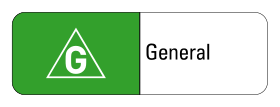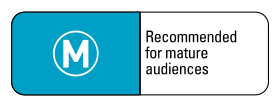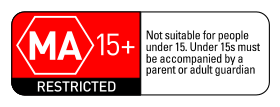Australian Classification Board facts for kids
The Australian Classification Board, also known as the ACB, is a group that works for the Australian government. Its main job is to give ratings to movies, TV shows, video games, and some books and magazines. These ratings help people, especially parents, decide what is okay for them and their children to watch, play, or read.
The ACB started way back in 1917. Over the years, it has changed its name and rules to keep up with the times. Today, it operates under a law called the Commonwealth Classification Act 1995. A team of people, including a director and board members, are chosen by the government to make the rating decisions.
The Board doesn't cut scenes out of movies or games. Instead, if it finds something has very strong content, it can refuse to give it a rating. This is called "Refused Classification," and it means the movie or game cannot be legally sold, rented, or shown in public in Australia.
Contents
History of the Ratings
The way movies and games are rated has changed a lot over the last century.
Early Movie Ratings
When the system started in 1917, there were only three ratings for movies from other countries:
- G for "general audiences" (everyone)
- A for "not suitable for children"
- SOA for "suitable for adults only"
These ratings were just advice. There were no laws stopping kids from seeing movies with adult ratings.
A Modern System
In 1971, a new system was created to give clearer advice and set legal age limits for some movies. The new ratings were:
- G for "general exhibition"
- NRC for "not recommended for children"
- M for "mature audiences"
- R for "restricted exhibition"
The NRC rating was confusing for parents, so it was changed to PG (Parental Guidance) in 1984. Later, in 1993, the MA 15+ rating was added for content that was stronger than M but not strong enough for an R rating.
Ratings for Video Games
Video games got their own rating system in 1994. At first, the government thought that because games are "interactive," they could have a stronger effect on young people. So, the rules for game ratings were stricter than for movies.
In 2005, the system was simplified. Video games started using the same ratings as movies, like G, PG, and M. However, for a long time, games could not get an R 18+ rating. This changed on January 1, 2013, when the R 18+ rating was finally introduced for video games.
How the Board Decides Ratings
The Board members watch movies and play video games to decide which rating they should get. They look at different things, like the themes, violence, language, and other adult content. The context of these elements is very important. For example, violence in a historical documentary is treated differently than violence in an action movie.
For some ratings, like MA 15+ and R 18+, there are legal age restrictions. This means it's against the law to sell or show these movies or games to someone younger than the age on the label. Other ratings, like G, PG, and M, are just recommendations.
When the Board gives a rating, it also provides "consumer advice." This is a short description of why the movie or game got its rating, such as "mild violence" or "coarse language." This helps people make a more informed choice. In 2020, the Board added "in-game purchases" to the consumer advice for video games that have them.
Movie and Video Game Ratings
Here are the ratings you will see on movies and video games in Australia.
Unrestricted Ratings (Advisory)
These ratings are recommendations. There are no laws about who can watch or play them.
Restricted Ratings (Legal Age Limits)
It is against the law to sell or show these to people younger than the age on the label.
Other Labels
You might see these other labels on movie posters or game cases.
Ratings for Books and Magazines
Most books and magazines don't need a rating. However, some publications that contain adult themes must be classified. This is most common for magazines aimed at adults.
- Unrestricted: Anyone can buy these. Some may have an M (Mature) consumer advice sticker, suggesting they are for readers 15 and over.
- Category 1 Restricted: You must be 18 or older to buy these. They must be sold in a sealed wrapper.
- Category 2 Restricted: Also for people 18 and over. These have more explicit content and can only be sold in special adults-only stores.
- Refused Classification (RC): These publications are banned and cannot be sold in Australia.
See also
 In Spanish: Junta de Clasificación Australiana para niños
In Spanish: Junta de Clasificación Australiana para niños
- Censorship in Australia
- Internet censorship in Australia
- Australian Commercial Television Code of Practice
- List of banned video games in Australia


















